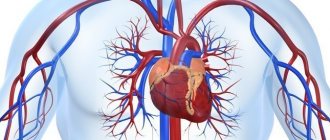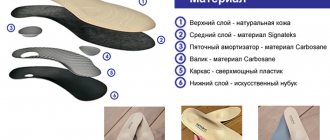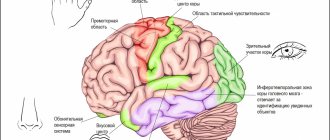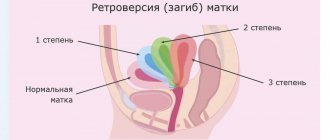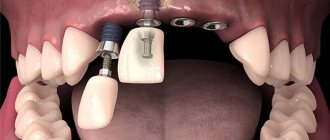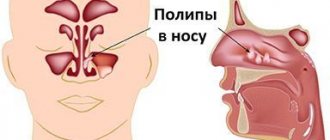A deviated nasal septum is a deformation, a displacement of the osteochondral plate dividing the nasal cavity into two symmetrical halves. Quite a few people have a deviated septum, making one nasal passage smaller than the other.
When severe misalignment occurs, one of the nasal passages may become blocked and air flow may be reduced, causing difficulty breathing.
Another symptom is dryness of the nasal mucosa, which can sometimes lead to crusting or nosebleeds in some patients. Persistent nasal congestion and obstruction may also occur as a result of tissue swelling.
Treatment for congestion and difficulty in nasal breathing may involve the use of medications to reduce swelling - this helps open the nasal passages, relieve congestion and somewhat improve nasal breathing. To restore nasal breathing completely, you need to correct the deviated septum - surgery is necessary.
What it is?
Septoplasty is an operation to correct defects and deformations of the osteochondral wall (nasal septum), dividing the nasal cavity into the left and right parts.
When the nasal septum is deviated, it moves to one side (usually to the left). Because of this, nasal breathing and the release of mucus from the sinuses are disrupted. Possible causes of a deviated nasal septum:
- physiological - sometimes a deviated septum occurs during fetal development or is caused by a hereditary predisposition
- traumatic - injuries to the face and skull can cause displacement of the nasal septum;
- The natural aging process can affect the curvature of the septum, in some cases this can lead to nasal obstruction.
Moreover, in infants such trauma can occur during childbirth.
Children and adults can suffer injuries that affect the curvature of the septum as a result of an accident. For example, during sports, rough games. Important! Deterioration of nasal breathing due to nasal curvature contributes to chronic inflammation of the paranasal sinuses, middle ear, bronchi and lungs, and impedes the outflow of venous blood from the brain. It is important to perform reconstructive surgery as early as possible in order to prevent the development of infectious complications and oxygen starvation of the body (hypoxia).
Figure 1. Top: Crooked nasal plate. Bottom: The same, but after surgery. Source: Mayo Foundation for Medical Education and Research
Nasal septum
The nasal septum is a wall made up of cartilage at the front of the nose and thin bone that runs along the back. The nasal cavity is divided into two not entirely symmetrical halves, which are covered on both sides with mucous membrane.
There are three types of nasal septum deformation:
- Curvature
- Thorn
- Crest
The majority of the adult population has a deviation from the norm, but if it does not interfere with free breathing, then it does not require treatment.
Indications
In mild cases, when the deformation of the septum does not interfere with the movement of air, surgery is not indicated. Surgical correction is necessary if:
- breathing through the nose is so impaired that the quality of life suffers;
- sinusitis (inflammation of the mucous membranes of the paranasal sinuses) recurs;
- frequent nosebleeds;
- significant cosmetic defect;
- pronounced snoring.
Figure 2. On the left is a deviated septum.
On the right - healed, after surgery. Source: houstonadvancedsinus.com Sometimes septoplasty is performed as a stage of a complex operation to correct maxillofacial malformations (cleft palate or cleft lip).
Symptoms of a deviated nasal septum
In a patient with a deviated nasal septum, the nasal passages narrow, making breathing difficult. Such patients exhibit the following symptoms:
- difficulty breathing through the nose;
- headache;
- snore;
- frequent ear pain;
- allergies;
- dry nose and throat;
- nosebleeds;
- rapid fatigue, decreased performance;
- constant inflammation of the nasal sinuses can provoke frontal sinusitis, sinusitis, sinusitis, rhinitis;
- rarely, but there are attacks of epilepsy or bronchial asthma.
Contraindications to septoplasty:
- coagulopathies (insufficient blood clotting with increased bleeding);
- chronic liver and kidney diseases;
- infections in the active stage;
- allergy to anesthetics;
- somatic diseases in the stage of decompensation (diabetes, heart disease, etc.).
Important! Since the septum is the “centre of growth” of the nose, correction of its shape is not recommended for girls under 16, and for boys under 17–18 years old. In these cases, surgery is performed only for emergency reasons, for example, after a nasal injury or to correct developmental abnormalities.
Causes of a deviated nasal septum
There are several reasons for deformation:
- Compensatory
- Traumatic
- Physiological
- Hereditary
Compensatory is when various formations (polyps, tumors) form in the nasal cavity, which put pressure on the septum on one side, and it gradually becomes deformed.
Traumatic - formed as a result of a certain injury and subsequent improper fusion of bone or cartilage tissue.
Physiological – are formed more often during adolescence, when the growth of the septum outstrips the growth of the bone frame (facial skeleton).
Hereditary ones speak for themselves - as a result of pathological heredity.
What types of surgery are there?
There are two options for nasal septum correction: the traditional open method and the endoscopic method. The first involves direct access to the osteochondral wall through the nostrils. The second allows you to visualize the surgical field in all details using an optical device - a rigid endoscope. Such operations are performed quickly, and the risk of postoperative complications is negligible.
Types of septoplasty:
- The traditional open method (submucosal resection of the nasal septum) involves direct access to the osteochondral wall through the nostrils.
- Endoscopic method - allows you to visualize the surgical field in all details using an optical device - a rigid endoscope. Such operations are performed quickly, and the risk of postoperative complications is negligible.
Is it necessary to have septoplasty if nothing bothers you?
Be careful: even with a deviated septum, your nasal breathing may not change in a way that you will notice. In this case, you must follow all the instructions of your treating otolaryngologist.
In such cases, loss of nasal breathing function may occur after several years, when compensation from other structures has passed.
The sooner you find out whether you have a deviated septum or not, the better for your health.
Are there any other ways to treat a septum?
No, the curvature can only be corrected through surgery. The only difference is that the surgery can have different volumes, determined by the doctor during diagnosis.
How does the nasal septum correction process work?
This surgical intervention is performed in the ENT department as planned: after the examination, the patient is admitted to the hospital. The procedure takes about an hour. If the postoperative period is calm, you can return home the next day and undergo recovery on an outpatient basis.
Photo: Archives of plastic surgery / Open-i (Attribution-NonCommercial 3.0 Unported)
Rehabilitation (recovery)
Restoring a patient’s health after rhinoseptoplasty is relatively easy. The only discomfort is that for some time you will have to breathe only through your mouth, which causes severe dry mouth. The operation and postoperative period are carried out under the careful supervision of a doctor, with all procedures carried out for a quick and successful recovery. Breathing is restored by the fifth or sixth week, full recovery comes after 2.5-3 months: swelling goes away and the patient can breathe freely and enjoy life. But in order for everything to be successful and pass in the shortest possible time, you must follow the following doctor’s recommendations:
- Do not wear glasses for 2-3 weeks;
- do not visit steam rooms, saunas, baths;
- sleep only lying on your back;
- do not tilt your head down;
- Do not engage in sports at this time and do not strain your body.
If these conditions are met, already in the second week after septoplasty, swelling will begin to subside, and breathing will become less difficult.
Diagnostics
An ENT doctor may detect a deviated septum during an examination. Bright light and a nasal speculum are usually sufficient to make the diagnosis. If concomitant pathology of the nasal structures is suspected, a computed tomography scan is prescribed.
Before the operation, the following examinations will be prescribed:
- clinical and biochemical blood tests;
- chest x-ray (especially important for patients over 45 years of age, smokers, and those with heart or lung disease);
- electrocardiogram.
Preparing for surgery
First of all, you need to conduct a thorough diagnosis. Diagnostics is carried out in several stages:
- Examination and consultation with an ENT doctor. The doctor examines the outer part of the nose to see if there are any visible abnormalities.
- Checks breathing through each nostril separately to identify difficulty breathing
- Evaluates the sense of smell: right and left nostrils, finding out how much it is damaged
The anterior one is carried out with a nasal dilator, each nostril is examined separately.
During posterior rhinoscopy, the nose and nasopharynx are examined
- If the examination is unsatisfactory, tests and additional laboratory tests are prescribed: x-ray
- computer graphics
- endoscopic examination
- taking tests
Possible complications:
Photo: Allergy & rhinology (Providence, RI) / Open-i (Attribution-NonCommercial-NoDerivs 3.0 Unported)
- uncontrolled bleeding;
- infection;
- perforation of the septum;
- changing the shape of the nose;
- impaired sense of smell;
- temporary numbness of the gums of the upper dentition;
- hemorrhage under the mucous membrane of the septum.
General features of surgery
Before performing surgery, the doctor prescribes a list of examinations and tests. They are often the same for any type of septoplasty. So, the doctor prescribes the following examinations and tests:
- electrocardiogram;
- fluorography;
- blood test for hepatitis, syphilis and HIV;
- biochemical analysis;
- consultation with an otolaryngologist;
- blood test for clotting.
Septoplasty consists of several stages. The first stage is preparing for surgery and choosing the type of anesthesia. Now in most cases local anesthesia is used, but for special indications general anesthesia can be used. The second stage is the actual operation to correct the septum. The third stage is rehabilitation.
Our services
The administration of CELT JSC regularly updates the price list posted on the clinic’s website. However, in order to avoid possible misunderstandings, we ask you to clarify the cost of services by phone: +7
| Service name | Price in rubles |
| Appointment with a surgical doctor (primary, for complex programs) | 3 000 |
| X-ray of the paranasal sinuses | 2 200 |
| Septoplasty | 68 000 — 98 000 |
All services
Make an appointment through the application or by calling +7 +7 We work every day:
- Monday—Friday: 8.00—20.00
- Saturday: 8.00–18.00
- Sunday is a day off
The nearest metro and MCC stations to the clinic:
- Highway of Enthusiasts or Perovo
- Partisan
- Enthusiast Highway
Driving directions
Postoperative care
After the operation, sanitation is required - that is, rinsing the nasal cavity. The first time, the surgeon does this, and after that the patient can cope quite well on his own. The number of sanitation depends on the body: for some, healing occurs quickly and two or three procedures are enough, while for others it may take a month of rinsing.
At first, you should not blow your nose too much, as any excess irritation may cause blood to flow. The nose will dry out very much for some time, so it will be necessary to regularly carefully clean it of crusts and lubricate it with ointment.
Modern sutures are not removed, which immediately saves the patient from an unnecessary and unpleasant procedure. Inpatient treatment lasts no more than three days, then the patient is examined on an outpatient basis.
GBOU "NIKIO im. L.I. Sverzhevsky" of the Moscow Department of Health
Deformation of the nasal septum, accompanied by its curvature, in many cases is accompanied by a permanent violation of nasal functions.
Deviation of the nasal septum of varying degrees is observed in half of the population, more often in men. Both the bone and cartilaginous parts of the organ can be affected. As a result, the process of normal nasal breathing is disrupted, which serves as a predisposing factor for most diseases in otorhinolaryngology.
In people with this pathology, the nasal passages are narrower on one side than on the other. This changes the airflow pattern and the affected side may be blocked. This “blockade” can cause chronic unilateral sinusitis. Dryness and cracks occur on the skin and mucous membrane of the affected half of the nose, which can cause nosebleeds.
Causes
In almost 90% of cases, a deviated nasal septum is associated with trauma. In newborns, the cause may be intrauterine or birth injury, since the nasal septum in infants is formed by soft, unfused cartilaginous sections that are easily damaged.
Subsequently, as the child grows, the discrepancy between the bony base of the nose and the deformed cartilaginous part increases, and the curvature becomes more noticeable. As a result, not only the shape of the face changes, but also functional breathing disorders develop.
In addition to injuries, the causes of a deviated nasal septum can be:
- congenital malformations of the facial part of the skull, for example, cleft palate;
- polyps and tumors of the nasal cavity;
- severe infectious diseases, chronic rhinitis.
Taking into account the listed factors, all causes of pathology are divided into groups:
- physiological, associated with the characteristics of the growth and development of cartilage and bone tissues of the nose;
- traumatic, caused by a mechanical factor, and the victim often does not even remember the seemingly minor injury;
- compensatory, caused by pathology of the nasal passages (tumor, polyp and others).
Features of septal deformation during a fracture depend on the direction of impact during a nasal injury:
- in case of injury to the tip of the nose, the bony base of the septum is not damaged, but as the child grows, the terminal part of the nose turns to the side; with a strong blow, a septal abscess may form in the future;
- when there is a blow to the back of the nose from the front, two scenarios are possible: if initially there was already a curvature of the nasal septum, it will break in the same direction; if the straight septum is damaged, the shape of the nose may not change;
- if a blow to the back of the nose comes from above, it always causes a fracture of the nasal bones; in this case, the back of the nose sinks, and subsequently its saddle-shaped deformation is formed;
- when the nose is hit from the side, the nasal septum can bend in the corresponding direction, causing deformation of the external nose or displacement of its back, sometimes with such an injury the sense of smell suffers;
- in case of damage caused by a fall on the face (for example, in an accident), the nature of the damage is varied; the nasal septum is often “crushed”, which is combined with injuries to the ethmoid bone, base of the skull, and fractures of the walls of the paranasal sinuses.
Determining the cause and mechanism of the curvature of the nasal septum is necessary for the doctor to determine the correct treatment tactics.
Symptoms
Clinical manifestations of a deviated nasal septum can be divided into general and local. Local ones include:
- unilateral difficulty breathing through the nose, a feeling of stuffiness in one nostril;
- impaired sense of smell and mucus discharge from the affected nostril;
- nasal sound and snoring, hearing loss;
- nosebleeds due to frequent injuries to dry mucous membranes;
- violation of the normal shape of the external nose.
Common symptoms are associated with insufficient nasal breathing function, as a result of which less air enters the lungs and the body experiences chronic oxygen starvation:
- fatigue; the child has poor performance at school;
- paroxysmal headache;
- child's retardation in mental and physical development;
- frequent colds.
The more pronounced the curvature of the nasal septum, the more often the general symptoms appear. They are especially dangerous for the development of a child.
Often this pathology is accompanied by other diseases, possibly associated with impaired breathing through the nose. These are vasomotor and allergic rhinitis, otitis media, adenoids, chronic sinusitis, tonsillitis, bronchial asthma.
With a significant deviated septum, the patient complains of dry mouth, a feeling of pressure in the nasal passages and sleep disturbance due to the inability to breathe through the nose.
Classification
It is often used to divide all deformations of the nasal septum into the following categories:
- slight displacement of the anterior section to the side with normal function;
- slight displacement in the same place, but with impaired nasal function;
- displacement of the septum at the level of the anterior end of the middle turbinate;
- a combination of the two previous types on different sides of the nasal cavity;
- ridge in the basal (posterior, main) section of the septum on one side;
- ridge in the anterior-basal part with a depression on the opposite side;
- combined disorder.
A “working” classification is also used, convenient for choosing the method of operation:
- C-shaped deflection;
- S-shaped deformation;
- ridge or spike on the septum;
- combined forms;
- vertical displacement of the partition up or down;
- dislocation or tearing of the cartilaginous part of the nasal wall;
- a structural anomaly involving the vertical plate of the ethmoid bone.
Diagnostics
A deviated nasal septum can be recognized using anterior rhinoscopy. This is a simple, painless procedure to examine the inside of the nose. However, this study is not enough to determine the indications for surgery.
The ENT doctor takes into account the following factors:
- degree of dysfunction (breathing, smell, resonator);
- patient complaints and concomitant diseases;
- the severity of the deformity, which is assessed using functional endonasal endoscopy, and in severe cases, computed tomography of the facial skull.
Before surgery, the patient is prescribed an x-ray of the nose and paranasal sinuses. If adenoids or signs of sinusitis are detected, these conditions must be treated first to avoid complications of surgical treatment.
Treatment without surgery
In mild cases of deformity, treatment without surgery is possible. It is aimed at eliminating unpleasant symptoms. The doctor may prescribe the following medications:
- decongestants (decongestants) that improve nasal breathing; however, these drugs cannot be taken for a long time;
- antihistamines, especially with concomitant hay fever;
- nasal sprays with glucocorticoids, which reduce inflammation and improve breathing.
Medicines only temporarily eliminate the symptoms of the disease, without eliminating its cause.
Another method of treatment without surgery in the generally accepted sense of the word is laser techniques. Laser septoplasty involves “cauterizing” a protruding part of the nasal septum with a laser beam. This technique is used for minor deformation.
Laser chondroseptoplasty is a fairly effective treatment method, during which laser radiation heats the nasal cartilage and makes it flexible. After this, the surgeon manually straightens the shape of the septum and fixes it with tampons. This intervention is minimally invasive, bloodless and practically safe.
Types of surgical treatment for deviated nasal septum
Despite the development of laser technologies, conventional septoplasty is still practically the only way to get rid of a deviated nasal septum.
Indications for septoplasty:
- chronic or recurrent diseases of the nose and paranasal sinuses;
- difficulty breathing through the nose on both sides;
- recurrent otitis and eustachitis;
- chronic purulent sinusitis;
- snoring, obstructive sleep apnea syndrome;
- headaches, constant weakness, signs of oxygen starvation of tissues;
- unaesthetic appearance of the patient.
Treatment of a deviated nasal septum can be carried out in different ways:
- operations that preserve nasal tissue;
- interventions with partial resection (removal) of tissues and their replacement with so-called non-free grafts from parts of the nasal walls;
- resection interventions with replacement of the resulting defect with a free graft.
In children, tissue-sparing operations are usually performed and endotracheal anesthesia is used. The degree of intervention depends on the severity of the anatomical defect. The success of the intervention largely depends on the experience and qualifications of the surgeon.
When performing a septoplasty, the surgeon makes a small incision in the septum and then removes excess bone or cartilage that is obstructing breathing. In some cases, to improve the external shape of the nose, correction of the external nose is performed at the same time. Both of these operations can be combined with intervention on the paranasal sinuses.
Septoplasty can be performed using modern endoscopic equipment, which reduces the risk of complications and speeds up the healing process of the postoperative wound.
Surgery to correct a deviated septum is usually performed on an outpatient basis under local or general anesthesia and takes about one to one and a half hours, depending on the extent. Often, 3 to 4 hours after the intervention, the patient can go home without staying in the hospital.
To stabilize the septum, cotton swabs are placed in the nasal passages and subsequently removed. If only septoplasty was performed, it is not accompanied by swelling or hemorrhages on the face. With concomitant correction of the external nose, slight swelling in the nasal area remains for several days.
The operation can be performed on children starting from preschool age, but many doctors recommend doing it after 15 years, when the formation and growth of the nose has completed.
After the nasal septum is restored, a course of antibiotics is prescribed. At the same time, vasoconstrictors, wound healing, and decongestants are used. The sutures are removed on days 5–6.
Contraindications to surgery include severe concomitant diseases and conditions:
- heart failure FC III – IV;
- myocardial infarction or stroke suffered over the past six months;
- decompensated diabetes with high levels of sugar and/or glycated hemoglobin in the blood;
- malignant tumors;
- acute infections, exacerbation of chronic inflammatory processes;
- bleeding disorders with hemorrhagic syndrome;
- dysmorphophobia is a mental disorder accompanied by unreasonable dissatisfaction with one’s appearance and inflated expectations from surgical intervention.
Treatment of a deviated nasal septum is effective in 90% of cases. After the operation, the patency of the nasal passages increases, nasal breathing and the function of the paranasal sinuses are restored, and other symptoms of the disease disappear.
In order to treat a deviated nasal septum, we invite patients to the specialists of NIKIO named after. L.I. Sverzhevsky DZM. The most experienced ENT doctors work here, who do an excellent job of restoring the normal shape of the septum. The extensive experience of surgeons allows operations to be performed without complications and with excellent long-term results.
Elimination of the curvature of the nasal septum is carried out exclusively surgically - septoplasty, cristotomy is possible endoscopic, with isolated minimal cartilage deformation - laser septochondroplasty using a holmium laser (Ho:YAG) with a radiation power of 4.8 W (energy - 0.6 J, frequency - 8.0 Hz) . We complete septoplasty by splinting the nasal septum with silicone splints. The latest development reduces the risk of such complications as hematoma of the nasal septum, reactive swelling of the mucous membrane of the nasal septum, and protects the nasal septum from traumatic factors in the postoperative period.
Our department has received patents for inventions on methods of treating deviated nasal septum:
- Utility model patent No. 81425 “Intranasal splint (variants and method of its fixation)
- Patent for invention No. 2414180 “Intranasal splint (variants) and method of its fixation.”
- Patent for invention No. 2493790 “Intranasal splint with integrated electrode.”
- Patent for invention No. 2493783 “Method of fixation of displaced mucoperichondrial flaps of the nasal septum with a “reverse” U-shaped suture.”
